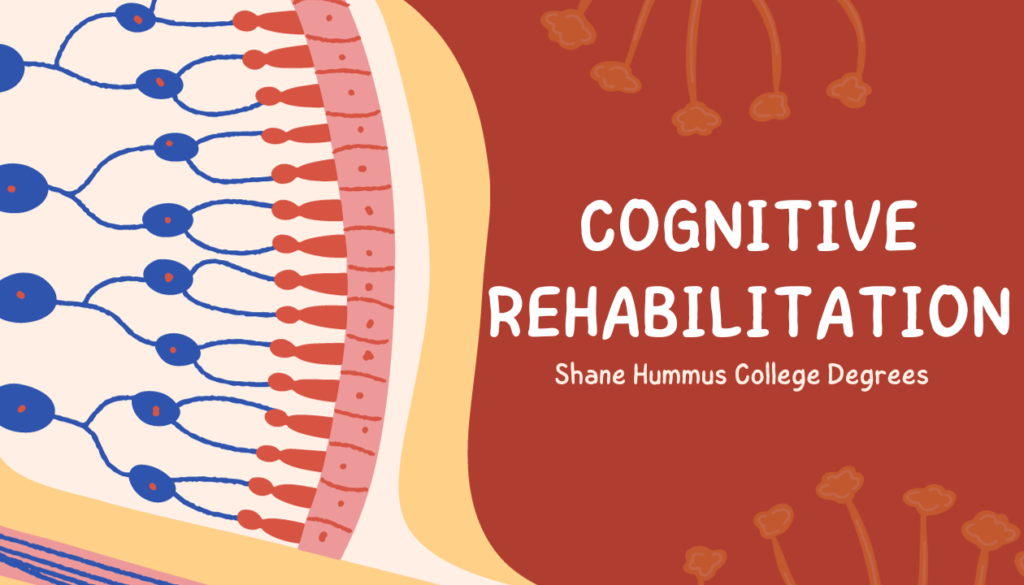Mind-Blowing Facts of Cognitive Rehabilitation
Cognitive rehabilitation refers to therapies and techniques that aim to improve cognitive functions such as memory, attention, perception, and problem solving. It helps people who have had injuries or disorders that caused the cognitive impairment. The goal is to restore cognitive deficits or develop compensatory strategies.

Causes of Cognitive Impairment
Cognitive impairment has many potential causes. Common causes include stroke, traumatic brain injury, and neurodegenerative diseases like Alzheimer’s disease.
Stroke
Stroke occurs when blood flow to part of the brain is interrupted, preventing oxygen from reaching brain cells. This causes cells to die, leading to brain damage that can produce cognitive deficits. The type and severity of impairment after a stroke depends on the extent and location of the brain injury. Attention, memory, perception, problem-solving or spatial skills may be affected.
Traumatic Brain Injury
Traumatic brain injury (TBI) results from an external force impacting the head. This can cause bruising, bleeding, and swelling in the brain. The location and extent of damage influences the types of deficits that emerge. Common TBI-related cognitive problems include issues with attention, memory, information processing speed, executive functioning, and behavior regulation.
Neurodegenerative Diseases
Diseases like Alzheimer’s and other dementias cause progressive cognitive decline due to abnormal protein deposits killing brain cells over time. As parts of the brain atrophy, complex functions like memory, communication, and reasoning deteriorate. Eventually losses occur in ability to independently manage self-care and daily responsibilities.
Goals of Cognitive Rehabilitation
Improve Cognitive Functions
Cognitive rehabilitation aims to improve cognitive functions that have been affected by injury or illness. Key goals may include improving attention, concentration, memory, perception, problem-solving abilities, language skills, visualization aptitude, reasoning, and executive function. Techniques help strengthen neural pathways through repetitive practice and learning strategies. The focus is to regain former cognitive strengths or develop skills to compensate for permanent deficits.
Enable Independence
Another major goal is to improve patients’ capacity to carry out activities of daily living independently. Cognitive rehabilitation helps equip people to successfully perform everyday tasks like cooking, driving, social interactions, household duties, and workplace activities. By learning to use tools like planners, reminders, timers and recorders, people can achieve autonomy even if some cognitive challenges remain.
Enhance Quality of Life
An overarching aim of cognitive rehabilitation is to enhance quality of life for people with cognitive impairments. Improving ability to function and participate in meaningful activities leads to higher engagement, confidence, and life satisfaction. Advancements in areas like attention, memory, decision-making, task completion, and social connection all contribute to better well-being. Even small gains make a difference.
Cognitive Rehabilitation Techniques
Many techniques and therapies exist to rehabilitate different cognitive functions. Here are the most common ones:
- Attention Process Training: Activities aim to improve focus, concentration, attention span, and ability to multitask. Useful for attention deficits.
- Memory Strategy Training: Uses methods like rhymes, chunking, visualization, or association techniques to strengthen encoding and retrieval of information. Helps with memory impairments.
- Errorless Learning: Lets patients practice successful remembering before advancing to more difficult memory tasks that may cause mistakes. Builds confidence.
- Cognitive Prosthetics: External aids like planners, reminders, timers, tape recorders, and checklists that compensate for memory/attention deficits.
- Computer-Assisted Training: Uses repetitive games and reward systems to rebuild neural pathways. Taps into neuroplasticity to improve cognitive skills.
- Tailored Techniques: Methods and activities are customized for each patient’s unique cognitive profile and lifestyle needs. Personalized approaches enhance outcomes.
- Compensatory Skill Building: Develops ways to work around residual deficits using tools, environmental modifications, and specialized techniques. Fosters independence.
The key is to match evidence-based therapies to each individual’s impairment types and severity levels. Techniques aim to restore cognitive function directly or develop compensatory mechanisms as needed.
Effectiveness of Cognitive Rehabilitation
Studies provide evidence that cognitive rehabilitation therapies enhance attention, memory, word finding, visual deficits and executive functions. But outcomes depend on many factors, including cause, severity and subtype of impairments and the patients’ age, education level and interval since the injury onset.
Consistency attending therapy sessions also impacts success. Chronic health issues, medications or metabolic disorders may interfere. Goals and activities need to align with individual vocational setting, social network and lifestyle to optimize gains. Further research is warranted on the most effective standardized protocols for various patient groups.
The Potential of Cognitive Rehabilitation
In summary, cognitive rehabilitation describes many therapies targeting memory, attention, perception and problem solving deficits from stroke, brain injury, dementia and other disorders. These techniques aim to rebuild cognitive capacity directly or develop compensatory mechanisms.
There is evidence that cognitive rehabilitation improves outcomes, but individuals’ response relies on personal physiology, lifestyle factors and consistency practicing new skills. More research on standardized methods may uncover optimal protocols for rehabilitation potential. Nevertheless, cognitive rehabilitation remains an important tool to help many people regain functioning after cognitive impairment occurs.
Looking for a different but meaningful degree? Check out my video about it:
Frequently Asked Questions About Cognitive Rehabilitation
How do you become a cognitive rehabilitation therapist?
To become a cognitive rehabilitation therapist requires a master’s degree in fields like psychology, neuropsychology, counseling, or speech language pathology. Required coursework includes classes on brain-behavior relationships, assessment, and evidence-based rehabilitation techniques. Post-graduate clinical rotations and case management experience are also essential.
What is cognitive-physical therapy?
Cognitive-physical therapy combines physical and cognitive rehabilitation strategies to treat deficits after a stroke, brain injury, or neurological disease. It aims to improve motor control while exercising memory, attention and perception through functional, dual-task activities. This facilitates neuroplasticity and skill transfer to daily living.
What are the steps to cognitive recovery?
Steps to cognitive recovery include prompt treatment of underlying issues, assessment of deficits, targeted strengthening of weak skills, practicing compensatory strategies for irreparable damage, generalizing improvements into different settings, and consistent follow-up/support. Motivation and self-care also aid progress.
What are the most common cognitive rehabilitation programs?
Common cognitive rehabilitation programs incorporate attention process training, memory compensation techniques, assistive technology, and computer exercises targeting executive functions. Programs are highly customized to individuals’ impairment profiles using evidence-based protocols.
What’s the best degree for cognitive rehabilitation?
Good foundation degrees for cognitive rehabilitation include psychology, neuroscience, speech language pathology, special education, counseling, and occupational or physical therapy. Graduate work develops rehabilitation specialization. Ongoing training refines expertise in evolving best practices.
